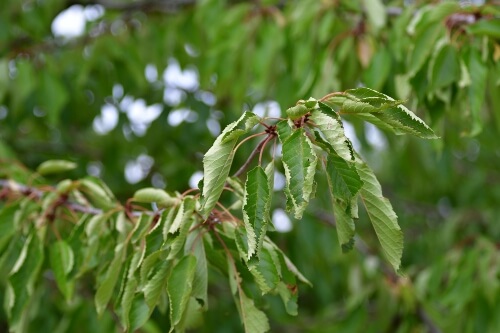
All around the globe, climate patterns are changing. In order to survive, trees in both forests and urban environments must adapt to new realities of living, from higher average temperatures to changes in precipitation patterns.
For trees across Massachusetts and greater New England, the warming climate is already presenting significant challenges, with even more predicted in the years ahead. Simply put, the regional ecosystems of tomorrow are going to look quite different from those of today. To give trees the best chance of survival and help local habitats thrive in the face of a changing climate, it’s important to be proactive when it comes to tree health — especially the trees within your direct control.
Recognizing the Problem
The first step in solving a problem is recognizing that there is a problem in the first place. That means recognizing the symptoms of a drought early on. Don’t wait for brittle, dried up shrubs to realize that the dry weather may be an issue. Watch out for:
- Wilting, a prime example of drought symptom
- Yellowing leaves or needles
- Early leaf/needle drop
- Cracks in bark
- Branch dieback
- A thinning canopy
- Stunted growth
- Scorched needles or leaves
It is also important to remember that these types of symptoms may be substantially delayed. While you may just be noticing them this year, it is possible that the problems causing these symptoms may have really begun as far back as a year or two ago! If you do notice these symptoms in your trees or shrubs, err on the side of caution and rule out early detection. Take immediate action and assume that you’re addressing an advanced problem from the outset.
How You Can Help Your Plants
Now that you know what to look for in terms of issues caused by drought, it’s time to move into even trickier terrain: solving those issues. Some of these are a bit obvious in theory, but even those are not so clear cut in execution. Take, for instance, the most obvious solution of all.
- Watering – For optimal results, apply water at one time, slowly, soaking deep into the entire root zone. You want to get down to about 8-10 inches. Avoid overhead watering, and watering in the middle of the day, opting instead for soaker hoses, direct spraying of roots, or trickle irrigation methods.
- Location – Sun exposure, soil moisture, wind exposure — any variable can make or break your plant or tree in the long run. Seeing signs of drought damage because your tree is in way too sunny of a spot means you’ve already made a serious mistake. Choosing the right site for the right plant starts plants off strong, helping them to stave off the effects of drought all the better as they age.
- Spacing – Do not overcrowd your plants. This means thinking about the future, taking into account how big and wide those plants or trees will be down the road. If you have trees that weren’t all that close together when they were saplings, but are now more mature and are really fighting for water resources, then you’ve brought the battle of the fittest into your yard!
- Mulching – Placing mulch around your plantings not only looks good, but it will help combat drought too. A 1 to 2 inch layer of mulch will help to cool the soil, prevent water loss and can also act as a weed barrier.
Need a Tree and Plant Healthcare Estimate?
Click below to leave your information and we will call you right back!
How We Can Help Your Plants
There is a lot that can be done to help your landscape cope with the current conditions, listed below are some of the most impactful services we offer to help achieve that goal.
- Deep Root Watering – Many municipalities are under strict or total water bans, greatly limiting your own ability to help your plants . However, with our specialized equipment, we are able to bring water directly to your location, and then water your trees or shrubs with a highly efficient deep root water injection. This process allows us to provide water directly to the feeder roots of the target plant, greatly benefiting the plant while minimizing wasted water.
- Growth Regulators – Tree Tech can apply growth regulators to certain trees or shrubs, and they provide much more benefit than the name suggests. In addition to slowing the growth of a plant, growth regulators also help plants reduce water losses through their leaves during hot and dry weather. Treated plants can also end up with thicker, greener leaves for enhanced beauty, a nice contrast to the current state of our landscape.
- Soil Amendments – The use of biostimulants and other soil amendments can help improve plant vigor and drought hardiness. Containing items such as sea kelp, yucca extract, and beneficial bacteria, they are often used in agriculture to minimize the water needs of crops, and these benefits carry over to landscape plants in drought situations. We are able to provide these compounds directly to the root zone of the intended plant, providing an immediate and significant benefit.
There is a lot of science to consider when drought does begin to take hold. When the soil is extremely dry, for instance, a reverse osmosis effect can lead what little water there is in your plant’s root system to transfer out into the dry soil surrounding it.
This, along with issues such as the shrinkage of cell membranes in the roots—leading to gaps between soil and roots—can really compound problems. Setting plants up for success with proper watering, placement, and spacing will give them a much greater chance of thriving, even when drought does strike.
Schedule Your Warm Weather Tree Care
We won’t leave you high and dry. If you’re uncertain about how to proceed with caring for your plants during this dry time, we’re happy to help you find the solutions you need. Contact us today with any questions that you may have.
Back to Tree and Plant Healthcare


